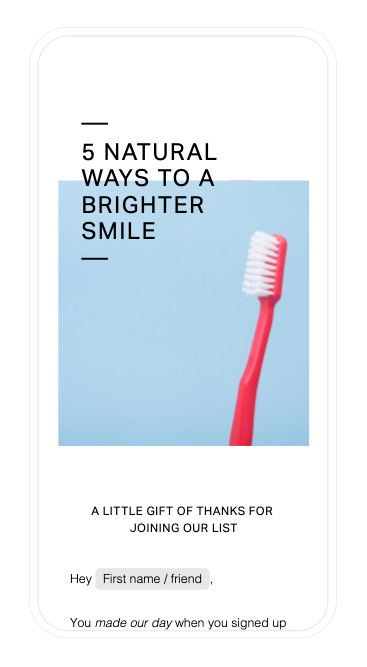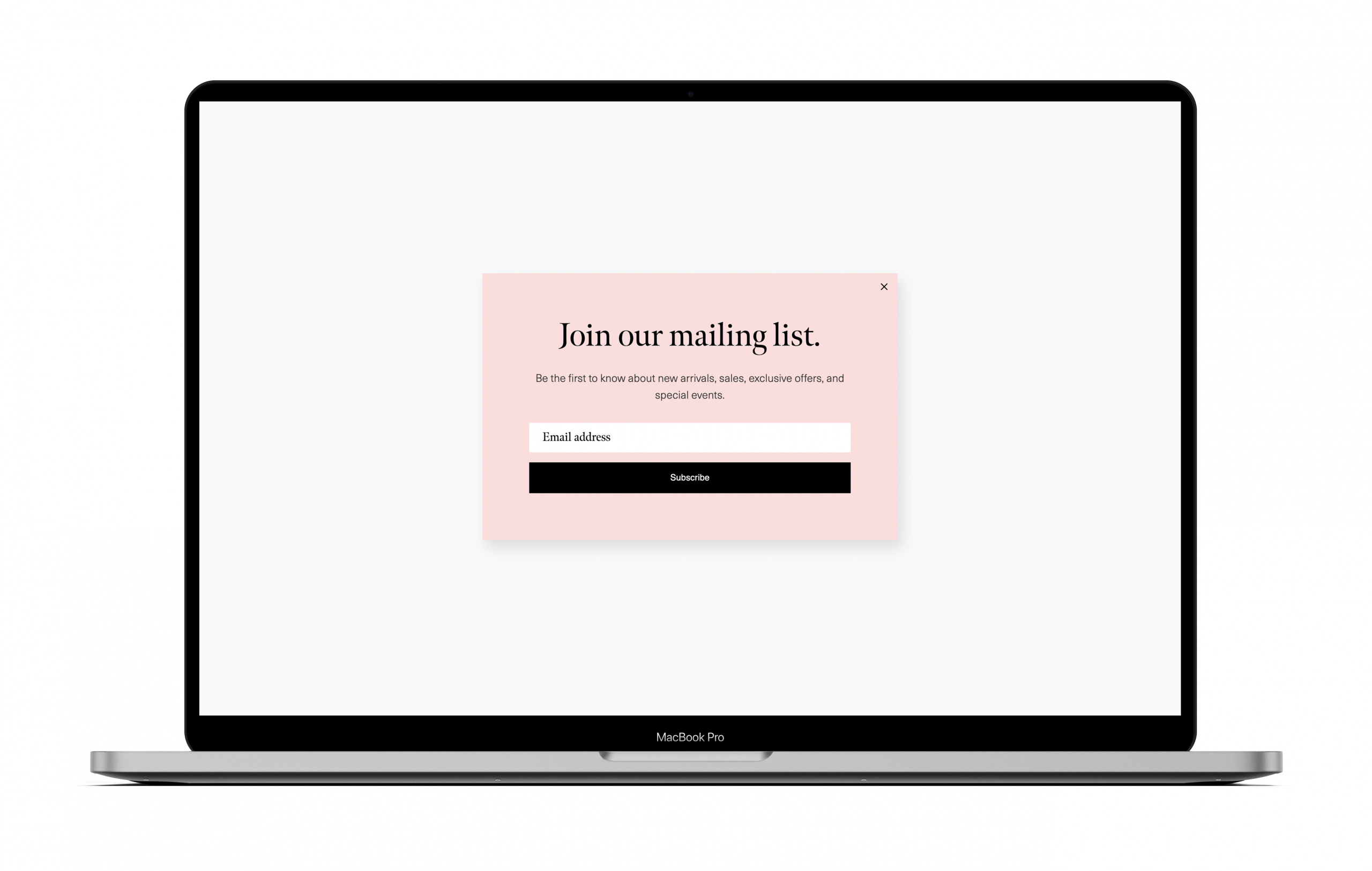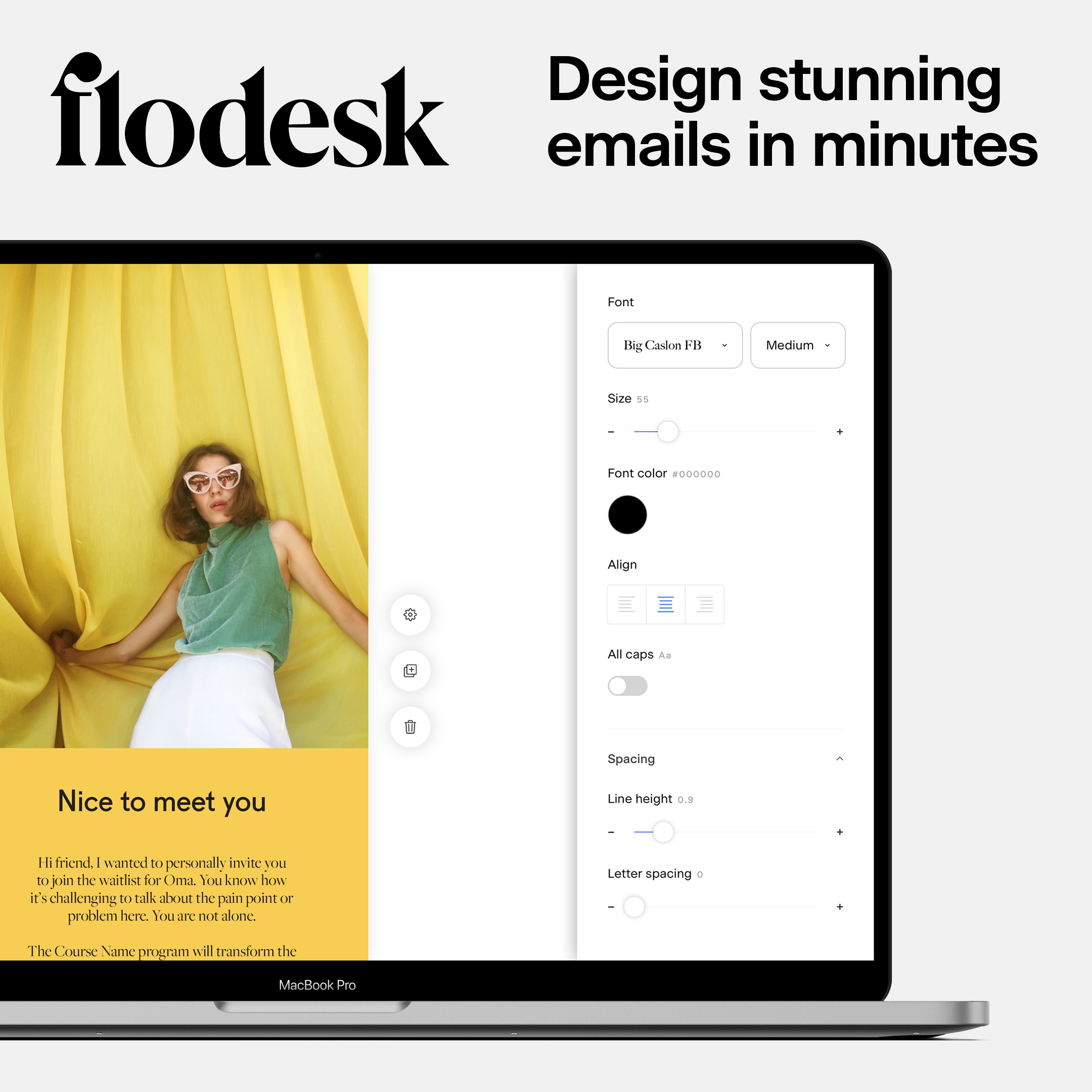5-Step Guide to Effective Email Marketing for Dentists
Table of Contents Jump to:
Jump to:
Table of contents
As a dentist, it can be challenging to keep the steady stream of patients you need to stay profitable.
While some clients prioritize their dental health, others leave years between appointments, only visiting when something goes wrong. This means you’ll need to work hard to keep them engaged. Here’s where email marketing comes in handy.
Effective email marketing can help you attract new customers and prompt current patients to invest in their dental health and make regular appointments.
This article digs into why email marketing is so important for dentists, the five types of emails you need in your email marketing strategy and the essential steps to getting started.
Why email marketing strategy is super effective for dentists
Let’s start with a quick look at why email marketing is so effective for small businesses like your dental practice.
It’s cost-effective
The return on investment for email marketing is significant and growing. Data shows that the ROI for email marketing is $40 for every $1 spent, which far outweighs any other marketing channel.
Plus, there’s little upfront investment. Creating and sending emails costs pennies, so even with a relatively small marketing budget, you can make a significant impact.
It builds patient loyalty
Your email list is a powerful way to attract new patients and engage your current ones. You can use it to keep your subscribers updated with new services and offer targeted promotions to patients who haven’t visited the practice for a while. The average lifetime value of a single patient is $12,000–15,000, so each one you retain makes a significant contribution to your bottom line.
It enhances credibility
Sending a follow-up email after an appointment provides the opportunity for patients to offer feedback. Acting on that feedback shows you’re listening to them and value their business, strengthening relationships.
As part of the email, you can also request a client testimonial to add to your dental website or Google Reviews. This acts as social proof, which is crucial for attracting new patients. 87% of consumers read online reviews while researching local businesses. Positive feedback validates your service, helps you stand out from the competition and builds your credibility.
5 types of marketing emails for dentists
Now you can see why email marketing is so vital for your small business, let’s run through the five types of email you need to consider as part of your marketing approach.
1. The welcome email
The welcome email is arguably the most important email you’ll ever send your subscribers. It sets the tone for your relationship and lets you introduce your brand to them.
Plus, subscribers are four times more likely to open welcome emails than other mailings, so if you want to prompt them to take action, this is the email to do it in. That action might include creating an account with your dental practice, downloading educational material on your services or booking an appointment.
To increase the chance of prospective patients booking their first appointment, it’s worth adding a promotional offer in your welcome email. A welcome email that contains a special offer boosts revenue by 30% per email compared to those that don’t include one.
Here’s what a welcome email looks like from health & wellness website Everyday Health.
By using their welcome email to share health-related articles, the health publication reassures their subscribers that they’ll be getting what they signed up for—helpful content on health topics.
2. The new product or service email
With this email, you can introduce new products or services within your practice. For instance, if you’re introducing an innovative method of teeth whitening, you can create an email explaining the new service, including who it’s best suited for and what benefits it offers.
You could also include a limited-time promotion within the email like a 20% discount for the first 100 patients or a complimentary at-home maintenance product. This is great because time-limited offers create a sense of urgency and act as a purchase trigger.
Here’s an example of a Flodesk new product launch email template design that can get subscribers excited about what comes next.
As a bonus, this type of email acts as a gentle nudge to subscribers to engage with you. For example, you may have several clients that aren’t interested in teeth whitening, but after seeing your new product or service email, they would realize they’re behind in their regular scheduled appointments and book a routine check-up.
3. The educational and how-to emails
Educational and how-to emails serve two key purposes—to build credibility and provide value. So delivering custom content to your subscribers via email helps them view you as more than just a dentist.
By providing how-to guides, you show that you know what you’re talking about. It means subscribers can rely on you for expert advice on dental care, so you become a one-stop shop if they have questions or issues they need solving regarding their dental health.
Here’s an example from a dental practice, sharing a free guide with their dental team’s top 5 secrets to a brighter smile—no weird chemicals, pastes or gadgets required!
4. Reminder emails
You might not associate reminder emails with a marketing opportunity, but they’re pretty important. For dentists like you, appointment reminders will encourage client accountability which means you’d reduce the number of no-shows you get. They also help you ensure you don’t miss out on the opportunity to book another client if patients realize they can’t make an appointment.
If you don’t charge a no-show fee, these missed appointments can affect your bottom line by hundreds of dollars per appointment so you need to be proactive about it.
Plus, you can use appointment reminder emails as an opportunity to sell additional services. For example, if patients have a check-up scheduled, you can encourage them to schedule a scale and polish too. You can also use a reminder email to prompt patients to book their next checkup, so you’ve always got a steady stream of income.
5. Targeted promotional emails
You can use targeted promotional emails if you need to re-engage inactive patients, reward loyal patients or match a competitor’s promotion.
Your promotional email could target a specific segment of your email list with a one-off discount on their dental checkup or include holiday offers, such as a Black Friday or New Year discount.
Targeted emails that contain a discount or other promotions are vital for increasing engagement and encouraging action. In fact, 68% of millennials said promotional emails influenced their purchasing behavior.
Get unlimited email sends & subscribers with Flodesk
We’ll never increase pricing because your email list is growing
5 major steps to starting email marketing campaigns for dentists
Let’s assume that you’re convinced that dental email marketing is the thing for you and your business. How do you get started? Keep on reading to find out.
Step 1: Start by choosing a great email marketing platform
Using a professional email marketing service saves you time and effort that could be better spent with your patients. And while getting started with email marketing is relatively straightforward, there are several things to consider, including design, content, scheduling and management.
Key features in a great email marketing platform
So, if you’re going to use an email marketing platform, what are the essential features to look out for?
- Design options: You want a platform that lets you create beautiful, engaging emails. If you’re new to email marketing, look for providers that offer a range of templates to get you started. If you’re more experienced, look for a platform that gives you the freedom to build from scratch.
- Mobile friendly: 75% of Americans who check their email on the go do so using smartphones. So, it’s essential to choose a platform that produces mobile-friendly emails that offer a good user experience.
- Automation: Using automation to manage your email scheduling means there’s one less thing for you to stay on top of. Plus, automation can help with personalization, which is essential for maximizing patient engagement.
- Easy import: If you already have patient email information stored elsewhere, you don’t want to spend time transferring it to another platform. So look for a provider that offers an easy and secure way to import your data.
Editor’s note: Choosing an email marketing platform with all of these features, like Flodesk, will make it easy for you to get started—and see results—quickly.
Step 2: Create a valuable freebie and a signup form for it
Your first line of action here is to identify and create something of value (or “a valuable freebie”) you can offer to your audience in return for their email. You can make something along the lines of a guide on beautiful smiles, the 5 biggest mistakes you’re making with your teeth or offering an exclusive discount.
But the most important factor here is that your freebie is an offer they won’t want to refuse. To create this type of freebie, you’ll need to dig into your experience as a dentist and find a nagging problem your patients almost always complain about. Once you find that, create a freebie that’ll help them solve that problem.
This freebie then becomes what you’ll use to ask for their email address. It could be in the form a blog post, an ebook, a video or anything else that works best for you.
Once you’ve created your valuable freebie, you need to go ahead and create a form. Essentially, this form is what you’ll be using to ask your audience to submit their emails in exchange for your freebie.
Need help designing your form? Flodesk has template galleries to help you create a beautiful form—fast. Try Flodesk free.
There are three different types of newsletter signup forms you can create:
A popup form
As the name implies, this form appears as a pop up over your website content while visitors are reading certain pages on your website.
A full page form
If you don’t have a website and aren’t looking to build one anytime soon, Flodesk’s full page form is perfect for you if you. The full page form publishes directly to the web without needing to paste in any code. Just copy and paste the link and share it wherever you want.
An inline form
You can place an inline form almost wherever you want it to show on your site. Once you build it, you’ll have a code which you can use to place the form wherever you want on your website.
Step 3: Start promoting your forms and collecting emails
How do you get started collecting addresses and building your email list? Let’s look at a few options:
- New patient paperwork: Don’t forget to use offline options to build your email list. You can ask patients if they want to receive newsletters or updates as they register at your practice.
- Your website: Put your website to work by including a contact form that gathers email addresses as people book an appointment or request a call-back. You can also use a popup or inline form to turn visitors into subscribers so you can reach them again and again even after they’ve left your website.
For example, Hamilton Dental does this by adding a sign-up link to its monthly newsletter at the bottom of its ‘Contact Us’ page.
Just make sure to include a checkbox to get their explicit consent to join your email marketing list.
- Other people’s websites: Use your expertise to create guest posts on other people’s websites, especially those offering complementary services for your target audience. Then add a link to your Full Page Form in your author byline.
For more tips on where to place your opt-in form, read 5 High-Converting Places on Your Website to Add Your Opt-in Email Form.
- Your social media: Creating educational content on social media like dental tips can drive engagement. You can then use your social media to build your email list by adding a link to your form on your Instagram bio or similar spots on other social media platforms.
- Paid ads: For example, you can use Facebook Ads to drive traffic to your Full Page Form or the opt-in page of your website. You can also use Google ads and Instagram ads.
- Events: Attend business or social events in your local community and offer a goody bag containing a small gift, such as toothpaste and a toothbrush, in exchange for an email sign-up.
To learn more about how to build your email list, read How to Build an Email List Without a Website.
Step 4: Start sending emails (but have a goal for each one you send)
Now you’ve grown your email list and built an audience waiting to receive your emails, it’s time to start sending!
The first email you send should be your welcome email because 74% of subscribers expect to receive a welcome email immediately after subscribing to an email list. Your welcome email should also be the first point of your automation process; it should be the first of a series of automated emails your subscribers get after they sign up. You definitely don’t want to have to monitor sign-ups and manually send an email every time someone new subscribes.
Flodesk Workflows make it easy to help you send automated emails based on specific triggers like sign-ups or new service launches that a particular audience segment’s interested in. To learn more about how to use Workflows, watch What Are Workflows and When to Use Them in Your Email Marketing.
Automation also allows you to get smart about when you send emails. Research shows the best time to send emails is a Tuesday morning, so scheduling campaigns to deliver at that time is a savvy move.
If you’ve imported an existing subscriber list into your new platform, this might be the time for a reminder email or targeted promotional email for those clients who haven’t visited the practice recently.
Head to the Flodesk email template gallery to start designing a stunning, on-brand email within minutes. You can even create image collages and add your Instagram feed all within the email builder—no third-party software needed.
Step 5: Monitor your email marketing numbers
Knowing your goal for each email marketing campaign is also important when it comes to monitoring essential metrics.
Trying to manage and grow a dental practice is time-consuming, which means you need to be strategic in your marketing effort. You want to place your resources where they generate the best return and understanding the numbers is crucial to do that.
If your email marketing platform provider has built-in analytics to help you understand your performance, make sure you’re regularly reviewing them to help inform your decision-making. To learn more about how to use Flodesk Analytics to improve your decision-making, read Understanding Your Flodesk Email & Workflow Analytics.
The three major things you should be tracking with analytics are
- Click-through rates: the percentage of subscribers who click through links in your email
- Unsubscribes: the number of subscribers opting out of your email list
- conversion rates: the percentage of subscribers interested in your offers
These help you to know if your email marketing efforts are helping you meet your goals for your dental practice.
Get unlimited email sends & subscribers with Flodesk
We’ll never increase pricing because your email list is growing
Dental email marketing FAQs
When you’re first getting into email marketing, it’s normal to have questions. Here are two of the most frequently asked questions:
Do dentists really need email marketing?
Email marketing is a great way to grow your dental practice. You can use many approaches to attract and retain patients, but, in terms of value for money, email marketing is hard to beat.
By providing high-value, relevant content in the form of emails, you also build your credibility as a service provider. Many people find visiting the dentist a challenge, and building a trusting relationship means you’ve probably got a loyal customer for life.
What makes a good dentist email?
The two main things that make a great email are value and personalization.
Value: Create and send only emails that add value to your subscribers. Be careful to not overdo it; email marketing is not about bombarding your subscribers with random information in a disorganized way. More than 50% of Americans say they get too many marketing emails, so you need to pay attention to not just sending valuable emails, but also how many times you’re sending those emails.
Personalization: Offering them useful details about products and services that might be perfect or personalized for them significantly improves the likelihood of them engaging with you. Plus, using targeted promotional offers can be the nudge they need to book an appointment or try an additional service.
Find out more about How to Write an Effective Email Newsletter Introduction to add value and personalization to your emails.
Let effective email marketing boost your dental practice
Email marketing campaigns are a cost-effective way to grow your dentistry business, whether you’re interested in converting potential patients into loyal customers or encouraging your existing patients to try a new product or service.
The right email marketing platform does the hard work for you, allowing you to create personalized content, automate scheduling and monitor results.
Flodesk is the fastest-growing email marketing platform on the market, helping dentists design emails people love to get.





